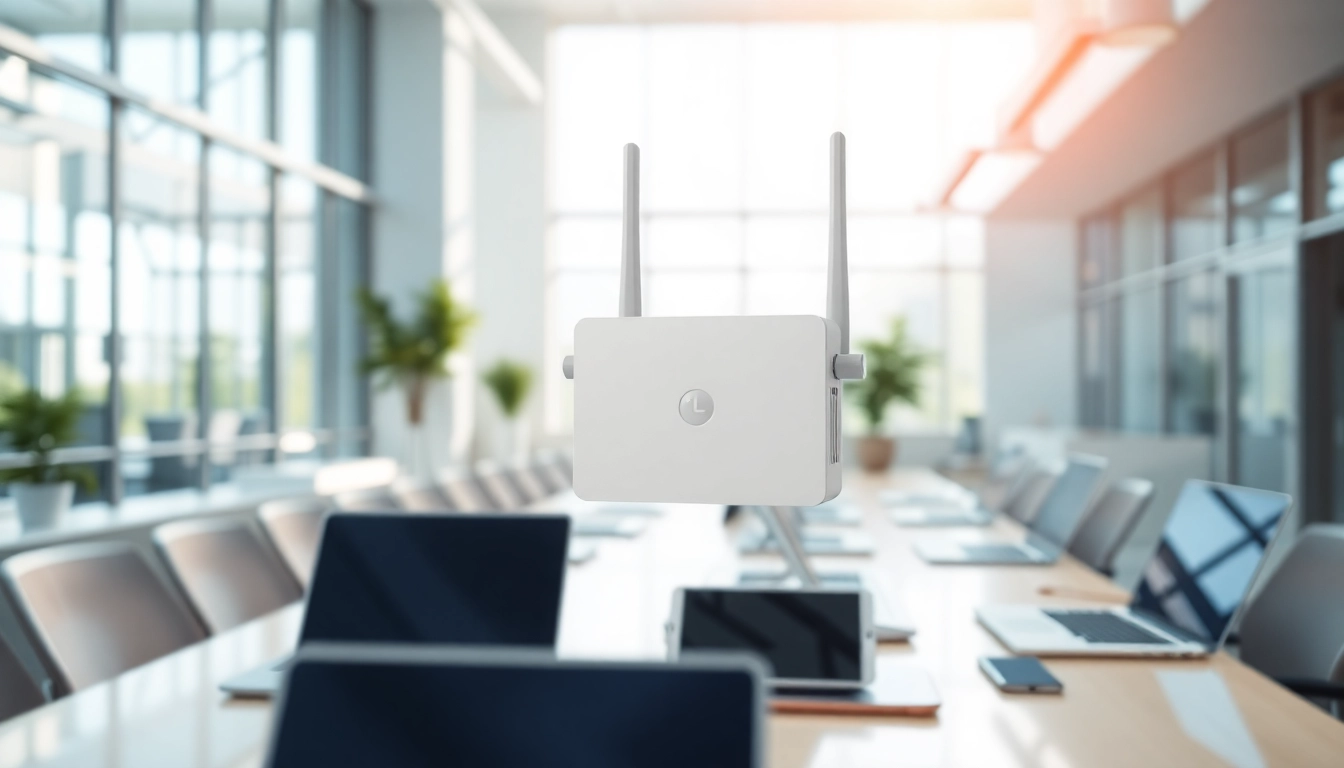
In the modern digital landscape, reliable networking is key to successful operations, whether in a home office, small business, or enterprise environment. At the heart of this connectivity are crucial devices like the Access Point. Understanding what an Access Point is and how it fundamentally works can help users enhance their network setup significantly. Below, we delve into the detailed aspects of Access Points, their advantages, setup process, comparisons with routers, and maintenance tips to ensure optimal performance.
What is an Access Point?
Defining Access Point and Its Functionality
An Access Point (AP) is a networking hardware device that allows Wi-Fi-enabled devices to connect to a wired network using Wi-Fi. The Access Point serves as a bridge between the wired internet connection and wireless devices, facilitating seamless communication and data transfer. By enabling wireless clients to connect to the wired LAN (Local Area Network), Access Points create an extended wireless network that enhances user experience and accessibility.
Types of Access Point Technologies
Access Points can be categorized into several types based on their functions and use cases:
- Standalone Access Points: These are basic devices that support wireless connections directly but lack advanced features like central management and scalability.
- Controller-Based Access Points: Managed through a centralized controller, these Access Points allow for better control, configuration, and monitoring of multiple devices across large areas.
- Cloud-Managed Access Points: These devices offer remote management capabilities via cloud platforms, ensuring ease of access and scalability for enterprises with multiple networks.
- Mesh Access Points: An innovative solution that allows multiple Access Points to work together to provide seamless coverage without dead spots, ideal for larger spaces.
Key Features of an Access Point
When choosing an Access Point, several key features are crucial for ensuring optimal network performance:
- Wireless Standards: Compatibility with the latest wireless standards (like Wi-Fi 5, Wi-Fi 6) influences speed and connectivity ranges.
- Security Protocols: Essential for protecting the network from unauthorized access, features like WPA3 encryption are recommended.
- Multiple SSIDs: Support for creating multiple SSIDs allows businesses to segregate guest and internal traffic easily.
- High Throughput: Ensures that the Access Point can handle multiple connections without a significant drop in speed.
Advantages of Using an Access Point
Improved Network Coverage and Reliability
One of the most significant advantages of deploying an Access Point is the enhancement of network coverage. By strategically placing multiple Access Points throughout a building, organizations can ensure reliable Wi-Fi signals in all areas, reducing dead zones and weak signals. This improved coverage is particularly beneficial in large office spaces, educational institutions, and public venues.
Enhancing User Experience and Speed
Access Points are designed to provide fast connections, enabling users to access online resources without interruptions. By leveraging the latest technologies, such as beamforming and MU-MIMO (Multi-User, Multiple Input, Multiple Output), Access Points can significantly enhance user experience by supporting higher data rates and more simultaneous connections.
Cost-Effectiveness Compared to Other Solutions
Investing in Access Points can be more cost-effective than implementing a more extensive networking setup with routers alone. They allow for a scalable solution—adding more units provides immediate benefits without the complexities associated with more intricate networking infrastructure.
Setting Up Your Access Point
Choosing the Right Location for Optimal Coverage
Proper placement of Access Points is crucial for maximizing coverage. Key considerations include:
- Central Location: Position the Access Point in a central location to distribute the wireless signal evenly throughout the desired coverage area.
- Elevation: Mounting the Access Point high (like on the ceiling) can help avoid obstructions that might hinder signal strength.
- Avoiding Interference: Keep it away from potential interference sources, such as microwaves or thick walls, which can affect connectivity.
Connecting Your Access Point to a Wired Network
The process typically includes the following steps:
- Running Ethernet Cables: Connect the Access Point to the network switch using an Ethernet cable.
- Powering the Access Point: Provide power to the Access Point, either through a standard electrical outlet or Power over Ethernet (PoE) if supported.
Configuring Settings for Security and Performance
Once connected, the next step is configuring the Access Point to meet the network’s security and performance standards. This includes:
- Setting up strong passwords and encryption protocols (WPA3 is recommended for enhanced security).
- Adjusting bandwidth settings to optimize speed and maintain a balance between user experience and network performance.
- Configuring Quality of Service (QoS) settings to prioritize traffic for specific applications, ensuring smooth streaming or gaming experiences.
Access Point vs. Router: Understanding the Differences
Functionality Comparison of Access Point and Router
The fundamental difference between an Access Point and a router lies in their functionalities. A router connects multiple networks and routes data between them, whereas an Access Point enables wireless devices to join a wired network. While routers can have wireless capabilities, an Access Point focuses solely on expanding wireless coverage within a given network.
When to Use an Access Point Instead of a Router
Implementing an Access Point may be more advantageous in scenarios where:
- You need to expand the range of an existing network without additional networking protocols.
- High-density environments with many users require enhanced connectivity without significant slowdowns.
- You want to create a segmented network structure for better traffic management.
Common Misconceptions About Access Points
Several myths may mislead users about Access Points:
- Access Points and routers are interchangeable – this is false; both serve unique roles in networking.
- All Access Points are the same – not true, as features, standards, and capabilities vary significantly among models.
Maintenance and Troubleshooting of Your Access Point
Regular Checks to Ensure Optimal Performance
To maintain the performance of your Access Point, regular monitoring is essential. Key aspects include:
- Firmware Updates: Regularly check for and install firmware updates to improve performance and security.
- Traffic Patterns: Monitor traffic to understand usage patterns and optimize performance as necessary.
- Signal Analysis: Use network analysis tools to check for interference and signal strength issues.
Identifying and Resolving Common Issues
Access Points can occasionally encounter problems. Here are common issues and their troubleshooting tips:
- Weak Signals: Reposition the Access Point for better coverage and check for interference from other electronic devices.
- Connectivity Drops: Ensure that firmware is updated and inspect network cables for integrity.
- Slow Speeds: Conduct bandwidth tests to determine if your network is insufficient to support the number of connected devices.
Upgrades and Future-proofing Your Access Point
As technology evolves, so will the demands on your network. Future-proofing your Access Point can be done by:
- Investing in Access Points that support the latest standards, such as Wi-Fi 6 or beyond, to ensure compatibility with emerging device technologies.
- Considering scalability options that allow you to add more Access Points as your network demands grow.






